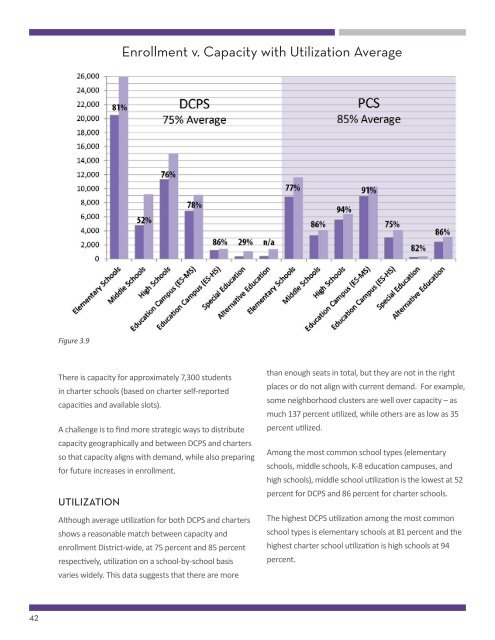DISTRICT COLUMBIA
DISTRICT COLUMBIA
DISTRICT COLUMBIA
You also want an ePaper? Increase the reach of your titles
YUMPU automatically turns print PDFs into web optimized ePapers that Google loves.
42<br />
Figure 3.9<br />
There is capacity for approximately 7,300 students<br />
in charter schools (based on charter self-reported<br />
capacities and available slots).<br />
A challenge is to find more strategic ways to distribute<br />
capacity geographically and between DCPS and charters<br />
so that capacity aligns with demand, while also preparing<br />
for future increases in enrollment.<br />
UTILIZATION<br />
Enrollment v. Capacity with Utilization Average<br />
Although average utilization for both DCPS and charters<br />
shows a reasonable match between capacity and<br />
enrollment District-wide, at 75 percent and 85 percent<br />
respectively, utilization on a school-by-school basis<br />
varies widely. This data suggests that there are more<br />
than enough seats in total, but they are not in the right<br />
places or do not align with current demand. For example,<br />
some neighborhood clusters are well over capacity – as<br />
much 137 percent utilized, while others are as low as 35<br />
percent utilized.<br />
Among the most common school types (elementary<br />
schools, middle schools, K-8 education campuses, and<br />
high schools), middle school utilization is the lowest at 52<br />
percent for DCPS and 86 percent for charter schools.<br />
The highest DCPS utilization among the most common<br />
school types is elementary schools at 81 percent and the<br />
highest charter school utilization is high schools at 94<br />
percent.


